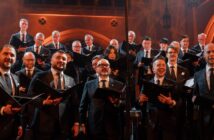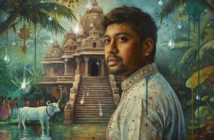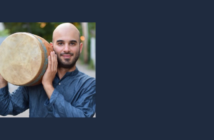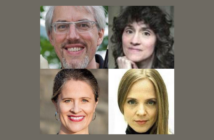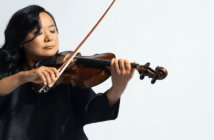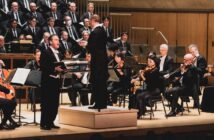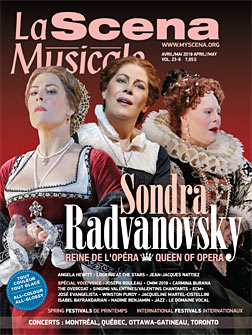
This page is also available in / Cette page est également disponible en:
Français (French)
Jean-Jacques Nattiez, author of four works on the master of Bayreuth, has just published The Hidden Stories of Richard Wagner: Poetic Art, Dream and Sexuality (Presses de l’Université de Montréal). Nattiez has volunteered to create a synthesis of his key ideas on the artwork at the centre of his life, without technical digressions and scholarly references. Here are excerpts from his book.
Richard Wagner (1813-1883) is a central figure in the history of music and lyrical theatre by virtue of the 10 operas today considered part of the repertoire but also owing to texts which, in their French translation, fill no fewer than 13 volumes. If he wrote so many articles and in parallel to the creation of his opera libretti and composing music, this is because he wanted to underline their raison d’être, their aesthetic scope and their philosophical content. Many disagree with this affirmation and refrain from considering the prose texts, which they criticize, not without reason, for their poor literary quality. Nietzsche described the language as “swamp German.” Despite the difficulties presented by Wagner’s writing style, there is no reason to deprive ourselves of writing that brings us to a better understanding of his artwork. Why, indeed, if his writings were not linked to his operas, would Wagner have desired that someone undertake to gather them in 10 volumes at the Bayreuth Festival’s opening in 1876?
With this conviction, we can take seriously the sexualization that he proposes, in Opera and Drama, of the “poetic intention” – male principle – that impregnates music – female principle – as a means of interpreting certain characters in The Ring of the Nibelung, which leads me to read in this Tetralogy a metaphorical story of music. By connecting the English horn solo opening Act 3 of Tristan and Isolde with autobiographical passages in My Life, as well as Wagner’s work titled Beethoven, it is possible to see Schopenhauer’s philosophy set in music and to make Tristan… the composer of Tristan. He is even the author of six texts allowing us to track the birth and development of an odious antisemitism. These texts are appropriate to study because their careful examination establishes the racist content of his libretti and certain aspects of his music as well.
From the examination of these approaches, we can make two general conclusions that will be fundamental to The Hidden Stories of Richard Wagner:
Most of Wagner’s operas contain, implicitly or explicitly, a poetic art, meaning that a set of principles govern the production
In this poetic art, there is a close link between the conception of musical drama, the function of the dream and the concept of androgyny that is at the core of Wagner’s vision of sexuality.
Delving into the details required to support my interpretations, I drafted three works of more than 400 pages each in which I did not spare readers the details of a critical examination of literature related to the subjects. In Androgynous Wagner, I abandoned myself to the study of Wagner’s theoretical texts (Christian Bourgois, 1990). In Analysis and Interpretations of Music (Vrin, 2013), I used many paradigms of musicology: structural analysis of music, tools of experimental psychology, transcription and dissection of solo sketches of musicology; the English horn, the links of music of oral tradition and those of some of his contemporaries, and philosophical exegesis. In Wagner Antisemite (Christian Bourgois, 2015), I sought to track down all the arguments that recognize or deny the presence of antisemitism in Wagner’s writings, his correspondence and his works. In these three books, I have not shrunk either from a proliferation of quotation, pointed musical examples and technical musical analysis.
This resolutely scientific perspective had its dilemma: I took the risk that, along the way, music lovers who have no reason to be familiar with the academic requirements of musicology would lose sight of my fundamental objective, namely the illumination of what I believe to be the deeper meaning of the operas under consideration.
I owe Claude Abromont, a colleague of the Conservatoire de Paris, for alerting me to this difficulty. He feared that the admirers of Wagner’s works, though interested initially by my remarks, would not follow my arguments to the end or simply ignore their existence. He encouraged me to draft a book presenting the essence of my conclusions.
I was all the more sensitive to the suggestion that in various studies, but especially Androgynous Wagner, a work now out of print, I had tried to show that in Wagner’s librettos one story can hide another. In addition, most of my research had been the subject of substantial program notes or lectures to the general public at the great opera houses that had commissioned them: the Théâtre Royal de la Monnaie in Brussels, the English National Opera in London and, in Italy, the Teatro Bellini of Catania, the Teatro Comunale of Bologna and La Scala of Milan. By adding some unpublished studies, these are the texts that I reproduce here, often with significant revisions in order to integrate them into the theme that runs through this book: to show how the poetic art of Wagner, certain fundamental features of his musical style and many of his characters are dominated by the double figure.
By bringing together for the first time in one volume all these contributions, I hope to show through my various studies that Wagner’s great operas constitute, from the The Flying Dutchman to Parsifal, so many variations on the same theme. By going beyond the scholarly investigations that have occupied me for many years, each time proposing a summary of the work in question, which makes it possible to distinguish between the literal meaning of the operas and the underlying narrative. I hope that the summary presentation of my conclusions, when the works are examined, allows a better understanding of the operas of Wagner, and explains the seductive force of his music, even when it is associated with unacceptable ideological content.
I propose here to show the role played by his borrowings from classical forms of opera, the use of sexual metaphors and the function of music in what he called “the work of total art.” For this purpose, the figure of the androgynous and the use of the dream make it possible to better understand the nature of the relations between the poetry, the drama and the music in each opera.
Jean-Jacques Nattiez
Excerpts from The Hidden Stories of Richard Wagner,
Presses de l’Université de Montréal, 2018, p. 9-12.
1 The Flying Dutchman, Tannhäuser, Lohengrin, The Ring of the Nibelung (The Rhinegold, The Valkyrie, Siegfried, Twilight of the Gods), Tristan and Isolde, The Master-Singers of Nuremberg, Parsifal.
Translation by Viviane Reid
This page is also available in / Cette page est également disponible en:
Français (French)


